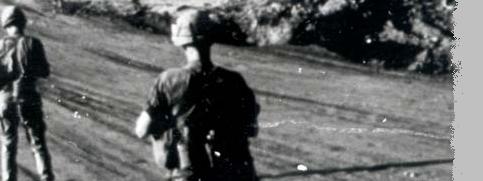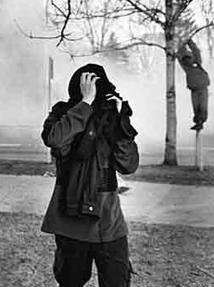HOME >>
Chemicals
>> 3-Chloroacetophenone

|
3-Chloroacetophenone

|
|
|
IUPAC Name: 1-(3-chlorophenyl)ethanone
Synonyms:
3'-Chloroacetophenone, omega-Chloroacetophenone,CHLOROACETOPHENONE,
Ambap7200, Acetophenone, 3'-chloro-, Ethanone,
1-(3-chlorophenyl)-, 1-(3-Chlorophenyl)ethanone, CCRIS 638,
288799_ALDRICH, 22845_FLUKA, EINECS 202-721-8, ZINC02039606,
Ethanone, 1-phenyl-, monochloro deriv, Ethanone, 1-phenyl-,
monochloro deriv., LS-67567, InChI=1/C8H7ClO/c1-6(10)7-3-2-4-8(9)5-7/h2-5H,1H,
99-02-5, 1341-24-8, 29731-15-5
CAS Registry Number: 99-02-5
Molecular Formula: C8H7ClO
Molecular Weight: 154.593580 [g/mol]
Density 1.184
Boiling point 241 șC
Flash point 105 șC |
Other chemicals were found as
well: chlorodiphenyl (which can cause liver damage and irritate the
eyes and skin), chloroacetophenone (tear gas), phosgene (a colorless
gas that can cause weakness lasting weeks or months), hydrogen
cyanide (a colorless gas with a slight almond-like odor that at
low-level exposures can cause breathing difficulties, heart pains,
vomiting, and headache), and trichloroarsine (which affects
respiration and can cause cancer).
Phenacyl chloride is a substituted acetophenone. It is a useful
building block in organic chemistry. Apart from that, it has been
historically used as a riot control agent, where it is designated CN.
Preparation
Phenacyl chloride is readily available commercially. It may be
synthesized by the Friedel-Crafts acylation of benzene using
chloroacetyl chloride, with an aluminium chloride catalyst
Uses
* 3-Chloroacetophenone is primarily used as a riot-control agent
(tear gas) and in Chemical Mace. (1-3,7)
* It is also used as a pharmaceutical intermediate and formerly as
an alcohol denaturant.
Sources and Potential Exposure
* The use of tear gas and Chemical Mace to control riots and disable
attackers causes direct exposure to 3-Chloroacetophenone through
skin contact and inhalation.
Occupational exposure may occur during its manufacture and use by
inhalation and dermal contact.
Assessing Personal Exposure
* No information was located regarding the measurement of personal
exposure to 3-Chloroacetophenone.
Health Hazard Information
Acute Effects:
* 3-Chloroacetophenone is a potent eye, throat, and skin irritant.
Acute inhalation exposure of humans causes burning of the eyes with
lacrimation; some degree of blurred vision; possible corneal damage;
irritation and burning of the nose, throat, and skin; burning in the
chest with dyspnea; and laryngotracheobronchitis
Acute dermal exposure is irritating and can result in first, second,
and third degree chemical burns in humans; these effects are
exacerbated when the skin is wet. Acute animal tests in rats, mice,
rabbits, and guinea pigs have demonstrated 3-Chloroacetophenone to
have high acute toxicity from oral exposure.

 Note:
These API/ chemicals are designated as those that are used in
the manufacture of the controlled substances and are important to
the manufacture of the substances. For any (Control Substance)
products Import and Export *** subjected to your country government
laws /control substance ACT. Note:
These API/ chemicals are designated as those that are used in
the manufacture of the controlled substances and are important to
the manufacture of the substances. For any (Control Substance)
products Import and Export *** subjected to your country government
laws /control substance ACT.
Note /Government Notification: N/A

|


|


